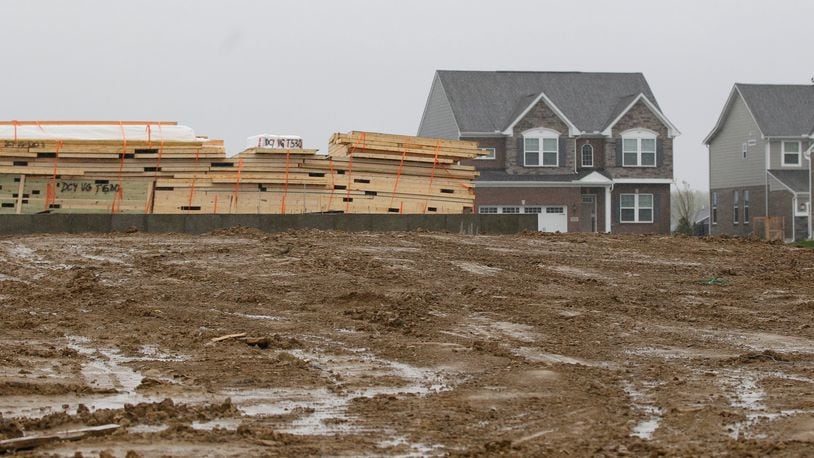Champaign, Clark, Darke and Preble counties together shed around 505 people.
Population growth is looked to as a sign of a region’s economic health because people follow jobs, employers need workers and it speaks to the health and attractiveness of communities, officials say.
MORE: Clergy: Feds coming to town about Good Sam closing
“More and more, our employers are focusing on the available workforce to fill jobs, and being able to show our region is growing helps us make the case to existing companies that this is the right place to grow and bring new companies and new opportunities to the region,” said Julie Sullivan, executive vice president for regional development at the Dayton Development Coalition.
In 2018, Warren County’s population increased 1.4 percent to about 232,170 residents, which was the third largest increase in the state behind Delaware and Union counties, Census estimates show.
Warren County is now the 10th largest county in Ohio, up two spots from 2017. Warren County’s population has risen 9 percent since 2010.
Warren County Commissioner Tom Grossmann said the growth is easy to explain: The county has good jobs, good schools, good housing, nice parks and a good quality of life.
“Growing population demonstrates the vibrancy, the attractiveness of this county,” he said.
MORE: New details: As traffic cameras returned to Dayton, auto crashes declined
The areas along interstates 71 and 75 have seen new development and businesses, and the strongest growth has occurred in southern parts of the county, including Mason, Deerfield Twp. and Hamilton Twp., Grossmann said.
Grossmann said Warren County has big employers, like Procter and Gamble, with 1,950 employees. The county is also home to entertainment destinations like Kings Island and Great Wolf Lodge.
Warren County is working on a $15 million sports park at Union Village that is expected to draw hundreds of thousands of people each year, which adds to the county’s already diverse group of amenities, Grossmann said.
Miami County and Greene County also added residents, respectively ranking 7th and 10th in the state for population growth.
MORE: ODOT video shows semi overturn, fall over Cincinnati overpass
Miami County’s population grew 0.9 percent to about 106,222 residents. Greene County’s increased 0.7 percent to 167,996 people.
Population growth has a positive impact on the local economy including home sales, retail sales and income taxes, said Greene County Administrator Brandon Huddleson.
The growth says the county is doing the right things to be attractive to people and businesses, and Census population estimates are important for determining federal and state funding levels, Huddleson said.
“It tells us that we have cultivated a good environment for businesses to locate to and grow in,” Huddleson said.
Butler and Montgomery, the region’s largest counties, also grew. The Census Bureau estimated that Butler County’s population rose 0.4 percent to 382,380 residents and that Montgomery County’s increased 0.1 percent to 532,330 residents.
Montgomery County had significant job growth and attracted a lot of diverse employers to the region in recent years, which helps the regional population and workforce grow in the right direction, said Erik Collins, Montgomery County’s director of community and economic development.
“We take a regional view of our population, economy, and workforce,” Collins said. “Many employees commute to Montgomery County companies from other communities and vice versa, so what is good for our region is good for Montgomery County.”
About half of Ohio’s 88 counties saw population growth in 2018. Counties that lost population included Darke County (-254 residents), Preble (-117), Champaign (-70) and Clark (-64).
MORE: Feds on Dayton clinic, pharmacy: 1.75 million pills in 2 years
Population growth in the Midwest is about employment growth, said Richard Stock, director of the Business Research Group at the University of Dayton.
The Dayton metro area (Montgomery, Miami, Greene counties) has experienced stable employment growth between 2013 and 2018, even though the rate of growth has slowed, he said.
Employment in the metro area grew 0.4 percent between 2017 and 2018, which happens to be the same growth in the metro area’s population.
The Cincinnati Metropolitan Area employment has been growing at between 1.5 to 1.8 percent annually over the last 6 year period, Stock said.
Counties on the leading edge of metropolitan areas with growing employment typically do better than the central counties, which can be seen in Warren County’s growth, he said.
Greene, Miami and Delaware counties also are outskirt counties, Stock said.
Growth in the region is good news because people cross county lines for work, said Sullivan, with the Dayton Development Coalition.
“We don’t have the same traffic congestion as other cities, making it easier for people to commute across the region, or even from Cincinnati or Columbus,” she said.
Livability.com recently ranked the city of Dayton one of the "10 awesome cities with little to no traffic." The website reported Dayton commuters spend an average of 10 extra minutes a day in traffic, and the average one-way commute was 20 minutes.
